Publication page
This page contains links to most publications by members of the Schluter lab
2025
Roesti, M., J. S. Groh, F. C. Jones, C. L. Peichel and D. Schluter.
2025. A species interaction kickstarts ecological speciation in
allopatry. Proceedings of the National Academy of Sciences (USA) 122:
e2506625122.
Reprint
| Supplement
| Dataset
S01 | Dataset
S02 | Data

Schluter, D., T. Veen, K. A. Thompson, G. L. Owens, and D. J.
Rennison. 2025. Coexistence in sympatry with gene flow before speciation
has completed. Molecular Ecology: e70079.
Publication
| Supplement
| Data &
scripts
Kinney, M. H., S. A. Blain and D. Schluter. 2025. Experimental test
of hybrid fitness change as a cause of species collapse following
species invasion. Proceedings of the Royal Society of London B,
Biological Sciences 292: 20251457.
Reprint
| Supplement
| Data &
scripts
Samuk, K., H. Visty and D. Schluter 2025. Genetic divergence in the
absence of strong ecological differences between coexisting white and
common Atlantic marine sticklebacks. Ecology and Evolution.
Preprint
on biorxiv
Blain, S. A. , M. Roesti, K. A. Thompson, M. H. Kinney, and D.
Schluter. 2025. Species interactions, divergence, and the rapid
evolution of ecological sexual dimorphism in threespine
sticklebacks.
Preprint
on biorxiv | Supplement
Sriramulu, P., D. Schluter, and D. I. Bolnick. 2025. Dynamics of
infection and immunity over 50 years as marine stickleback adapt to
freshwater. Evolution Letters 9: qraf016
Publication | Supplement
| Data
Hu, Yisi, W. Zhou, Y. Hu, and F. Wei. 2025. Conservation evolutionary
biology: a unified framework connecting the past, present, and future of
biodiversity conservation. Molecular Biology and Evolution 42:
msaf122.
Publication
2024
Schluter, D. 2024. Variable success in linking micro and
macroevolution. Evolutionary Journal of the Linnean Society 3: kzae016.
Reprint
| Online
volume: Global Perspective on Adaptive Radiation
Combrink, L. L., J. Golcher‐Benavides, A. L. Lewanski, J. A. Rick, W.
C. Rosenthal, and C. E. Wagner. 2024. Population genomics of adaptive
radiation. Molecular Ecology: e17574.
Publication
Härer, A, K. A. Thompson, D. Schluter, and D. J. Rennison. 2024.
Associations between gut microbiota diversity and a host fitness proxy
in a naturalistic experiment using threespine stickleback fish.
Molecular Ecology 33:e17571.
Reprint
| Supplement
| Sequencing
reads | R
scripts
Thompson, K. A., Y. Brandvain, J. M. Coughlan, K. E. Delmore, H.
Justen, C. R. Linnen, D. Ortiz-Barrientos, C. A. Rushworth, H.
Schneemann, M. Schumer and R. Stelkens. 2024. The ecology of hybrid
incompatibilities. Cold Spring Harb Perspect Biol. 16: a041440.
Reprint
2023
Rolland, J., L. F. Henao-Diaz, M. Doebeli, R. Germain, L. J. Harmon,
L. L. Knowles, L. H. Liow, J. E. Mank, A. Machac, S. P. Otto, M.
Pennell, N. Salamin, D. Silvestro, M. Sugawara, J. Uyeda, C. E. Wagner,
D. Schluter. 2023. Conceptual and empirical bridges between micro and
macroevolution. Nature Ecology & Evolution 7: 1181–1193.
Reprint
Roesti, M., J. S. Groh, S. Blain, M. Huss, P. Rassias, D. I. Bolnick,
Y. E. Stuart, C. L. Peichel, and D. Schluter. 2023. Species divergence
under competition and shared predation. Ecology Letters 6: 111–123.
Reprint
| Supplement
| Supp
tables | Data
on Dryad

Blain, S. D. Schluter, C. Adams, P-A. Amundsen, R. Knudsen, and L.
Chavarie. 2023. Patterns and repeatability of multi-ecotype assemblages
of sympatric Salmonids. Global Ecology and Biogeography 32:2257–2270.
Reprint
2022
Schluter, D. and L. H. Rieseberg. 2022. Three problems in the
genetics of speciation by selection. Proceedings of the National Academy
of Sciences (USA) 119: e2122153119.
Reprint
Thompson, K. A., C. L. Peichel, D. J. Rennison, M. D. McGee, A. Y. K.
Albert, T. H. Vines, A. K. Greenwood, A. R. Wark, M. Schumer, and D.
Schluter. 2022. Genetic evidence for environment-dependent hybrid
incompatibilities in threespine stickleback. PLoS Biology 20: e3001469.
doi.org/10.1371/journal.pbio.3001469
Reprint
| Supplement
| Primer
by Coughlan | Data
on Dryad | R scripts

Thompson, K. A. and D. Schluter. 2022. Heterosis counteracts hybrid
breakdown to forestall speciation by parallel natural selection.
Proceedings of the Royal Society of London B, Biological Sciences 289:
20220422.
Reprint
| Supplement
Chhina, A. K., K. A. Thompson and D. Schluter. 2022. Adaptive
divergence and the evolution of hybrid trait mismatch in threespine
stickleback. Evolution Letters 6: 34-45.
Reprint
|
Supplement
Blain, S. A., L. Chavarie, M. H. Kinney, and D. Schluter. 2022. Test
of frequency dependent selection in the evolution of a generalist
phenotype. Ecology and Evolution 12: e8831.
Reprint
|
Supplement
Irwin, D. and D. Schluter. 2022. Hybridization and the coexistence of
species. American Naturalist 200: E93–E109.
Reprint
| Supplement
Freeman, B. G., M. Strimas-Mackey and E. T. Miller. 2022.
Interspecific competition limits bird species’ ranges in tropical
mountains. Science 377: 416–420.
Article
Freeman, B. G., D. Schluter* and J. A. Tobias*. 2022. The latitudinal
gradient in the rate of evolution of a biotic interaction trait. Ecology
Letters 25:635–646.
* co-senior authors
Reprint
| Supplement
| R
scripts
Freeman, B. G., J. Rolland, G. A. Montgomery, and D. Schluter. 2022.
Faster evolution of a premating reproductive barrier is not associated
with faster speciation rates in New World passerine birds. Proceedings
of the Royal Society of London B, Biological Sciences 289: 20211514.
Reprint
| Supplement
Freeman, B. G, G. A Montgomery, J. Heavyside, A. E. Moncrieff, O.
Johnson, and B. M. Winger. 2022. On the predictability of phenotypic
divergence in geographic isolation. Evolution 77: 26-35.
Article
Schneemann, H., A. D. Munzur, K. A. Thompson and J. J. Welch. 2022.
The diverse effects of phenotypic dominance on hybrid fitness. Evolution
76-12: 2846–2863.
Reprint
Geneva, A.J., S. Park, D. G. Bock, P. L. H. de Mello, F. Sarigol, M.
Tollis, C. M. Donihue, R. G. Reynolds, N. Feiner, A. M. R., J. D.
Lauderdale, S. G. Minchey, A. J. Alcala, C. R. Infante, J. J. Kolbe, D.
Schluter, D. B. Menke and J. B. Losos. 2022. Chromosome-scale genome
assembly of the brown anole (Anolis sagrei), an emerging model species.
Communications Biology 5, 1126. https://doi.org/10.1038/s42003-022-04074-5
Reprint
| Supplement
| Supp
description | Supplementary
data
2021
Schluter, D., K. B. Marchinko, M. E. Arnegard, H. Zhang, S. D. Brady,
F. C. Jones, M. A. Bell, and D. M. Kingsley. 2021. Fitness maps to a
large-effect locus in introduced stickleback populations. Proceedings of
the National Academy of Sciences (USA) 118: e1914889118.
Reprint
|
Appendix
Thompson, K. A., M. Urquhart-Cronish, K. D. Whitney, L. H. Rieseberg,
and D. Schluter. 2021. Patterns, predictors, and consequences of
dominance in hybrids. American Naturalist 197: E72–E88.
Reprint
Freeman, B. G. and M. W. Pennell. 2021. The latitudinal taxonomy
gradient. Trends in Ecology and Evolution 36: 778-786. https://doi.org/10.1016/j.tree.2021.05.003
Reprint
Freeman, B. G., Y. Song, K. J. Feeley, and K. Zhu. 2021. Montane
species track rising temperatures better in the tropics than in the
temperate zone. Ecology Letters 24: 1697–1708.
Reprint
McKenzie, J. L., A. Araújo, J. L. Smith, D. Schluter, and R. H.
Devlin. 2021. Incomplete reproductive isolation and strong
transcriptomic response to hybridization between sympatric sister
species of salmon. Proceedings of the Royal Society of London B,
Biological Sciences 288: 20203020 https://doi.org/10.1098/rspb.2020.3020
Reprint
Uyeda J.C., N. Bone, S. McHugh, J. Rolland, and M. W. Pennell. 2021.
How should functional relationships be evaluated using phylogenetic
comparative methods? A case study using metabolic rate and body
temperature. Evolution 75: 1097-1105.
Article.
Broennimann O., B. Petitpierre, M. González-Suárez, J. Jeschke, J.
Rolland, S. Bacher, and A. Guisan A. 2021. In or out? Native climatic
niche innerness explains introduction success in exotic mammals. Nature
Communications 12: 2353.
Article.
Drury J., J. Clavel, J. A. Tobias, J. Rolland, C. Sheard, and H.
Morlon. 2021. Tempo and mode of morphological evolution are decoupled
from latitude in birds. PloS Biology 19: e3001270.
Article
Harmon L. J., M. W. Pennell, L. F. Henao Diaz, J. Rolland, B. Sipley,
and J. Uyeda. 2021. Causes and Consequences of Apparent Timescaling
Across All Estimated Evolutionary Rates. Annual Review of Ecology,
Evolution, and Systematics 52: 587–609.
Chavarie, L., C. E. Adams, H. K. Swanson, M. S. Ridgway, W. M. Tonn,
and C. C. Wilson. 2021. Ecological diversity. Pp 69-118 in A.M. Muir, C.
C. Krueger, M. J. Hansen, and S. C. Riley (Eds.) The Lake Charr
Salvelinus namaycush: Biology, Ecology, Distribution, and
Management. Springer, NY.
Germain, R. M., S. P. Hart, M. M. Turcotte, S. P. Otto, J. Sakarchi,
J. Rolland, T. Usui, A. L. Angert, D. Schluter, R. D. Bassar, M. T.
Waters, F. Henao-Diaz, and A. M. Siepielski. 2021. On the Origin of
Coexisting Species. Trends in Ecology & Evolution 36: 284–293.
Reprint
|
Supplement
2020
Roesti, M., D. N. Anstett, B. G. Freeman, J. A. Lee-Yaw, D. Schluter, L.
Chavarie, J. Rolland, and R. Holzman. 2020. Pelagic fish predation is
stronger at temperate latitudes than near the equator. Nature
Communications 11: 1527.
Reprint
|
Behind
the paper

Machac, A. 2020. The dynamics of bird diversity in the new world.
Systematic Biology 69: 1180–1199.
Article
Rolland, J., D. Schluter and J. Romiguier. 2020. Vulnerability to
fishing and life history traits correlate with the load of deleterious
mutations in teleosts. Molecular Biology and Evolution 37:
2192–2196.
Reprint
|
Supplement
Thompson, K. A. 2020. Experimental hybridization studies suggest that
pleiotropic alleles commonly underlie adaptive divergence between
natural population. American Naturalist 196: E16–E22.
Reprint
Chavarie, L., et al. 2020. Dietary vs non-dietary fatty acid profiles of lake trout morphs from Lake Superior and Great Bear Lake: Are fish really what they eat? Canadian Journal of Fisheries and Aquatic Sciences 77: 1209–1220.
Freeman, B. G., M. Scholer, M. Boehm, J. Heavyside, and D. Schluter.
2020. Adaptation and latitudinal gradients in species interactions: nest
predation in birds. American Naturalist 196: E160–E166.
Reprint
Santangelo, J. S., C. Advenard, L. R. Rivkin, and K. A. Thompson. 2020.
Multivariate phenotypic divergence along an urbanization gradient.
Biology Letters 16: 20200511
Reprint
Loiseau O., A. Weigand, S. Noben, J. Rolland, D. Silvestro, M. Kessler,
M. Lehnert, and N. Salamin. 2020. Slowly but surely: gradual
diversification and phenotypic evolution in the hyper-diverse tree fern
family Cyatheaceae. Annals of Botany 125: 93–103.
Article
Gillespie, R. G. G. M. Bennett, L. De Meester, J. L. Feder, R. C.
Fleischer, L. J. Harmon, A. P. Hendry, M. L. Knope, J. Mallet, C.
Martin, C. E. Parent, A. H. Patton, K. S. Pfennig, D. Rubinoff, D.
Schluter, O. Seehausen, K. L. Shaw, E. Stacy, M. Stervander, J. T.
Stroud, C. Wagner, G. O. U. Wogan. 2020. Comparing adaptive radiations
across space, time, and taxa. Journal of Heredity 111: 1–20.
Reprint
2019
Miller, S. E., M. Roesti, and D. Schluter. 2019. A single interacting
species leads to widespread parallel evolution of the stickleback
genome. Current Biology 29: 530–537.e6.
Reprint
|
Supplement
Xie, K. T., G. Wang, A. C. Thompson, J. I. Wucherpfennig, T. E.
Reimchen, A. D. C. MacColl, D. Schluter, M. A. Bell, K. M. Vasquez, and
D. M. Kingsley. 2019. DNA fragility in the parallel evolution of pelvic
reduction in stickleback fish. Science 363: 81–84.
Reprint
| F1000 |
Research
Highlight|
Supplement
Thompson, K. A., M. M. Osmond, and D. Schluter. 2019. Parallel genetic
evolution and speciation from standing variation. Evolution Letters 3:
129–141.
Reprint
|
Supplement
Freeman, B. G, J. Tobias, and D. Schluter. 2019. Behavior influences
range limits and patterns of coexistence across an elevational gradient
in tropical bird diversity. Ecography 42: 1832–1840.
Reprint
Rennison, D. J., S. M. Rudman, and D. Schluter. 2019. Genetics of
adaptation: experimental test of a biotic mechanism driving divergence
in traits and genes. Evolution Letters 3: 513–520.
Reprint
|
Supplement
Rennison, D., S. M. Rudman, and D. Schluter. 2019. Parallel changes in
gut microbiome composition and function during colonization, local
adaptation and ecological speciation. Proceedings of the Royal Society
of London B, Biological Sciences 286: 20191911.
Reprint
|
Supplement
Rudman, S. M., J. M. Goos, J. B. Burant, K. V. Brix, T. C. Gibbons, C.
J. Brauner and P. D. Jeyasingh. 2019. Ionome and elemental transport
kinetics shaped by parallel evolution in threespine stickleback. Ecology
Letters 22: 645–653.
Reprint
Rolland, J. and F. Condamine. 2019. The contribution of temperature and
continental fragmentation to amphibian diversification. Journal of
Biogeography 46: 1857–1873.
Article
Donati G., V. Parravicini, F. Leprieur, O. Hagen, T. Gaboriau, C. Heine,
M. Kulbicki, J. Rolland, N. Salamin, C. Albouy, L. Pellissier. 2019. A
process-based model supports an association between dispersal and the
prevalence of species traits in tropical reef fish assemblages.
Ecography 42: 2095–2106.
Article
Condamine*, F.L., J. Rolland*, and H. Morlon. 2019. Assessing the causes
of diversification slowdowns: temperature-dependent and
diversity-dependent models receive equivalent support. Ecology Letters
22: 1900–1912.
Article
*co-first
authors.
Bay, R. A., E. B. Taylor, and D. Schluter. 2019. Parallel introgression
and selection on introduced alleles in a native species. Molecular
Ecology 28: 2802–2813.
Reprint
2018
Thompson, K. A., L. H. Rieseberg, and D. Schluter. 2018. Speciation and
the city. Trends in Ecology and Evolution 33: 815–826.
Reprint
Rolland, J., D. Silvestro, D. Schluter, A. Guisan, O. Broenniman, and N.
Salamin. 2018. Endothermy, climatic niche evolution and the distribution
of vertebrate diversity. Nature Ecology and Evolution 2: 459–464.
Reprint
|
Supplement
|
News
& Views
Freeman, B. G., M. N. Scholer, V. Ruiz-Gutierrez, and J. W. Fitzpatrick.
2018. Climate change causes upslope shifts and mountaintop extirpations
in a tropical bird community. Proceedings of the National Academy of
Sciences (USA) 115: 11982–11987.
Reprint
Freeman, B. G. and B. M. Beehler. 2018. Limited support for the
“abundant centre” hypothesis in birds along a tropical elevational
gradient: implications for the fate of lowland tropical species in a
warmer future. Journal of Biogeography. 2018:1–12.
Reprint
Samuk, K.M., J. Xue, and D.J. Rennison. 2018. Exposure to predators does
not lead to the evolution of larger brains in experimental populations
of threespine stickleback. Evolution 72: 916–929.
Reprint
|
Supplement
| Data
Gygax, M., A. K. Rentsch, S. M. Rudman, and D. J. Rennison. 2018.
Differential predation alters pigmentation in threespine stickleback
(Gasterosteus aculeatus). Journal of Evolutionary Biology
31:1589–1598.
Reprint
Roesti, M. 2018. Varied genomic responses to maladaptive gene flow and
their evidence. Genes 9: 298. doi.org/10.3390/genes9060298
Reprint
Haenel, Q., T. G. Laurentino, M. Roesti, and D. Berner. 2018.
Meta-analysis of chromosome-scale crossover rate variation in eukaryotes
and its significance to evolutionary genomics. Molecular Ecology
27:2477–2497.
Reprint
Brix, K. V., C. J. Brauner, D. Schluter, and C. M. Wood. 2018.
Pharmacological investigation into mechanisms of Na+ uptake by
Fundulus heteroclitus in freshwater: evidence that DAPI inhibits
Na+/H+ exchangers. Comparative Biochemistry and Physiology C 211:
1–6.
Reprint
2017
Schluter, D. and M. Pennell. 2017. Speciation gradients and the
distribution of biodiversity. Nature 546: 48–55.
Reprint
|
Supplement
Freeman, B. G., G. A. Montgomery, and D. Schluter. 2017. Evolution and
plasticity: Divergence of song discrimination is faster in birds with
innate song than in song learners in Neotropical passerine birds.
Evolution 71: 2230–2242.
Reprint
|
Supplement
| Data
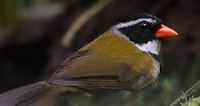
Freeman, B. G. and G. A. Montgomery. 2017. Using song playback
experiments to measure species recognition between geographically
isolated populations: A comparison with acoustic trait analyses. Auk
134: 857–870.
Reprint
Bay1, R. A., M. E Arnegard1, G. L
Conte1, J. Best, N. L Bedford, S. R McCann, M. E Dubin, Y. F.
Chan, F. C Jones, D. M Kingsley, D. Schluter2, and K.
Peichel2. 2017. Genetic coupling of female mate choice with
polygenic ecological divergence facilitates stickleback speciation.
Current Biology 27: 3344–3349.
1co-first authors;
2co-senior authors
Reprint
|
Supplement
| Dryad data
Samuk, K., G. L. Owens, D. J. Rennison, K. E. Delmore, S. Miller, and D.
Schluter. 2017. Gene flow and selection interact to promote adaptive
divergence in regions of low recombination. Molecular Ecology 26:
4378–4390.
Reprint
|
Supplement
|
Perspective
| F1000
Rudman, S. M., M. Kreitzman, K. M.A. Chan, and D. Schluter. 2017.
Evosystem services: rapid evolution and the provision of ecosystem
services. Trends in Ecology and Evolution 32: 403–415.
Reprint
|
Reply
to Faith et al
Miller, S. E., M. Barrueto, and D. Schluter. 2017. A comparative
analysis of experimental selection on the stickleback pelvis. Journal of
Evolutionary Biology 30: 1165–1176.
Reprint
|
Supplement
Germain, R. M., J. L. Williams, D. Schluter, and A. L. Angert. 2017.
Moving character displacement beyond characters using contemporary
coexistence theory. Trends in Ecology & Evolution 33: 74–84.
Reprint
|
Supplement
2016
Rudman, S. M. and D. Schluter. 2016. Ecological impacts of reverse
speciation in threespine stickleback. Current Biology 26, 490–495.
Reprint
|
Supplement
|
Dispatch
Rudman, S. M., J. Heavyside, D. J. Rennison, and D. Schluter. 2016.
Piscivore addition causes a trophic cascade within and across ecosystem
boundaries. Oikos 125: 1782–1789.
Reprint
| Data
Rennison, D. J., G. L. Owens, N. Heckman, D. Schluter and T. Veen. 2016.
Rapid adaptive evolution of colour vision in the threespine stickleback
radiation. Proceedings of the Royal Society B, Biological Sciences 283:
10.1098/rspb.2016.0242.
Reprint
|
Supplement
| Data
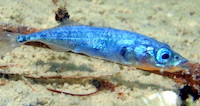
Miller, S. E., K. M. Samuk and D. J. Rennison. 2016. An experimental
test of the effect of predation upon behaviour and trait correlations in
the threespine stickleback. Biological Journal of the Linnean Society
119: 117–125.
Reprint
Schluter, D. 2016. Speciation, ecological opportunity, and latitude.
American Naturalist 187: 1–18.
Reprint
|
F1000
| Dryad data
El-Sabaawi, R. W., M. L. Warbanski, S. M. Rudman, R. Hovel and B. M. Matthews. 2016. Investment in boney defensive traits alters organismal stoichiometry and excretion in fish. Oecologia 181: 1209. doi:10.1007/s00442-016-3599-0.
Gibbons, T. C., S. M. Rudman, and P. M. Schulte. 2016. Responses to simulated winter conditions differ between threespine stickleback ecotypes. Molecular Ecology 25: 764–775.
Vines, T., A. Dalziel, A. Albert, T. Veen, P. Schulte and D. Schluter.
2016. Cline coupling and uncoupling in a stickleback hybrid zone.
Evolution 70: 1023–1038.
Reprint
Erickson, P. A, A. M. Glazer, E. E. Killingbeck, R. M. Agoglia, J. Baek,
S. M. Carsanaro, A. M. Lee, P. A. Cleves, D. Schluter, and C. T. Miller.
2016. Partially repeatable genetic basis of benthic adaptation in
threespine sticklebacks. Evolution 70: 887–902.
Reprint
Østbye, K., C. Harrod, F. Gregersen, T. Klepaker, M. Schulz, D. Schluter, and L. A. Vøllestad. 2016. The temporal window of ecological adaptation in postglacial lakes: a comparison of head morphology, trophic position and habitat use in Norwegian threespine stickleback populations. BMC Evolutionary Biology 16: 102.
2015
Miller, S. E., D. Metcalf, and D. Schluter. 2015. Intraguild predation
leads to genetically based character shifts in the threespine
stickleback. Evolution 69: 3194–3203.
Reprint
|
Supplement
| Dryad data
Conte, G. L., M. E. Arnegard, J. Best, Y. F. Chan, F. C. Jones, D. M.
Kingsley, D. Schluter, and C. L. Peichel. 2015. Extent of QTL reuse
during repeated phenotypic divergence of sympatric threespine
stickleback. Genetics 201: 1189–1200.
Reprint
|
Supplement
Rennison, D. J., K. Heilbron, R. D..H. Barrett, and D. Schluter. 2015.
Discriminating selection on lateral plate phenotype and its underlying
gene, Ectodysplasin, in threespine stickleback. American
Naturalist 185: 150–156.
Reprint
|
Appendix
| Dryad data
Rudman, S. M., M. A. Rodriguez-Cabal, A. Stier, T. Sato, J. Heavyside,
R. W. El-Sabaawi, and G. M. Crutsinger. 2015. Adaptive genetic variation
mediates bottom-up and top-down control in an aquatic ecosystem.
Proceedings of the Royal Society of London Series B, Biological Sciences
282: 10.1098/rspb.2015.1234.
Reprint
2014
Arnegard, M. E., M. D. McGee, B. Matthews, K. B. Marchinko, G. L. Conte,
S. Kabir, N. Bedford, S. Bergek, Y. F. Chan, F. C. Jones, D. M.
Kingsley, C. L. Peichel and D. Schluter. 2014. Genetics of ecological
divergence during speciation. Nature 511: 307–311.
Reprint
|
Supplement
|
Curr
Biol Dispatch
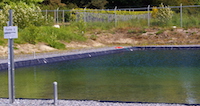
Samuk, K., D. Iritani, and D. Schluter. 2014. Reversed brain size sexual
dimorphism accompanies loss of parental care in white sticklebacks.
Ecology and Evolution: ece3.1175.
Reprint
|
Supplement
| Dryad data
Marchinko, K. B., B. Matthews, M. E. Arnegard, S. M. Rogers and D.
Schluter. 2014. Maintenance of a genetic polymorphism with disruptive
natural selection in stickleback. Current Biology 24: 1289–1292.
Reprint
|
Supplement
McGee, M. D., D. Schluter, and P. C. Wainwright. 2014. Functional basis
of ecological divergence in sympatric stickleback. BMC Evolutionary
Biology 13: 277.
Reprint
Cleves, P. A., N. A. Ellis, M. T. Jimenez, S. Nunez, D. Schluter, D. M.
Kingsley, and C. T. Miller. 2014. Evolved tooth gain in sticklebacks is
associated with a cis-regulatory allele of Bmp6.
Proceedings of the National Academy of Sciences (USA) 111:
13912–13917.
Reprint
|
Correction
Miller, C. T., A. M. Glazer, B. R. Summers, B. K. Blackman, A. R.
Norman, M. D. Shapiro, B. L. Cole, C. L. Peichel, D. Schluter, and D. M.
Kingsley. 2014. Additive, anatomically regional, and clustered
quantitative trait loci control skeletal evolution in sticklebacks.
Genetics 197: 405–420.
Reprint
|
Supplement
Wray, G. A., H. E. Hoekstra, D. J. Futuyma, R. E. Lenski, T. F. C.
Mackay, D. Schluter, and J. E. Strassmann. 2014. Does evolutionary
theory need a rethink? No, all is well. Nature 514: 161–164.
Reprint
at Nature
Vines, T. H., A. Y. K. Albert, R. L. Andrew, F. Debarre, D. G. Bock, M. T. Franklin, K. J. Gilbert, J.-S. Moore, S. Renaut, and D. J. Rennison. 2014. The availability of research data declines rapidly with article age. Current Biology 24: 1–4.
Crutsinger, G. M., S. M. Rudman, M. A. Rodriguez‐Cabal, A. D. McKown, T.
Sato, A. M. MacDonald, J. Heavyside, A. Geraldes, E. M. Hart, C. J.
LeRoy, and R. W. El-Sabaawi. 2014. Testing a ‘genes‐to‐ecosystems’
approach to understanding aquatic–terrestrial linkages. Molecular
Ecology 23: 5888–5903.
Reprint
Seehausen O., Butlin, R. K. Keller, I., Wagner, C. E., Boughman, J. W., Hohenlohe, P. A., Peichel, C.L., Saetre, G.-P., Bank, C., Brannstrom, A., A. Brelsford, C. Clarkson, F. Eroukhmanoff, J. L. Feder, M. Fischer, A. D. Foote, P. Franchini, C. D. Jiggins, F. C. Jones, A. K. Lindholm, Lucek, K., Maan, M. E., Marques, D. A., Martin, M. E., Marques, D. A., Martin, S. H., Matthews, B., Meier, J. I., Most, M., Nachman, M. W., Nonaka, E., Rennison, D. J., Schwarzer, J., Watson, E. T., Westram, A. M., & A. Widmer. 2014. Genomics and the origin of species. Nature Reviews Genetics 15: 176–192.
2013
Conte, G. and D. Schluter. 2013. Experimental confirmation that body
size determines mate preference via phenotype matching in a stickleback
species pair. Evolution 67: 1477–1484.
Reprint
| Dryad data
Southcott, L., L. Nagel, T. Hatfield, and D. Schluter. 2013. Weak
habitat isolation in a threespine stickleback (Gasterosteus spp.)
species pair. Biological Journal of the Linnean Society 110:
466–476.
Reprint
Des Roches, S., J. B. Shurin, D. Schluter, and L. J. Harmon. 2013.
Ecological and evolutionary effects of stickleback on community
structure. PLoS ONE 8(4): e59644.
Reprint
Veen, T., S. J. Ingley, R. Cui, J. Simpson, M. Rahmani Asl, J. Zhang, T. Butkowski, W. Li, C. Hash, J. B. Johnson, W. Yan and G. G. Rosenthal. 2013. anyFish: an open-source software to generate animated fish models for behavioural studies. Evolutionary Ecology Research 15: 361–375.
Vines, T. H., R. L. Andrew, D. G. Bock, M. T. Franklin, K. J. Gilbert,
N. C. Kane, J.-S. Moore, B. T. Moyers, S. Renaut, D. J. Rennison, T.
Veen, and S. Yeaman. 2013. Mandated data archiving greatly improves
access to research data. FASEB Journal, fj.12-218164.
Reprint
2012
Conte, G. L., M. E. Arnegard, C. L. Peichel and D. Schluter. 2012. The
probability of genetic parallelism and convergence in natural
populations. Proceedings of the Royal Society of London Series B,
Biological Sciences 279: 5039–5047.
Reprint
|
Supplement
Rogers, S. M., P. Tamkee, B. Summers, S. Balabahadra, M. Marks, and D.
M. Kingsley, and D. Schluter. 2012. Genetic signature of adaptive peak
shift in threespine stickleback. Evolution 66: 2439–2450.
Reprint
|
Supplement
| Dryad data |
F1000
Ingram, T., R. Svanbäck, N. J. B. Kraft, P. Kratina, L. Southcott, and
D. Schluter. 2012. Intraguild predation drives evolutionary niche shift
in threespine stickleback. Evolution 66: 1819–1832.
Reprint
|
Supplement
| Dryad data
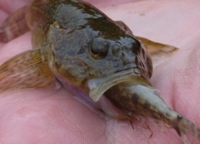
Svanbäck and D. Schluter. 2012. Niche specialization influences adaptive
phenotypic plasticity in threespine stickleback. American Naturalist
180: 50–59.
Reprint
|
Appendix
| Dryad data
Jones, F. C., Y. F. Chan, J. Schmutz, J. Grimwood, S. D. Brady, A.
Southwick, D. Absher, R. M. Myers, T. E. Reimchen, B. E. Deagle, D.
Schluter, D. M. Kingsley. 2012. A genome‐wide SNP genotyping array
reveals patterns of global and repeated species-pair divergence in
sticklebacks. Current Biology 22: 83–90.
Reprint
|
Supplement
|
Data
Lavoué S, M. Miya, M. E. Arnegard, J. P. Sullivan, C. D. Hopkins &
M. Nishida. 2012. Comparable ages for the independent origins of
electrogenesis in African and South American weakly electric fishes.
PLoS ONE 7(5): e36287
Reprint
Via, S., G. Conte, C. Mason-Foley and K. Mills. 2012. Localizing FST
outliers on a QTL map reveals evidence for large genomic regions of
reduced gene exchange during speciation-with-gene-flow. Molecular
Ecology 21: 5546–5560.
Reprint
Gilbert, K. J., R. L. Andrew, D. G. Bock, M. T. Franklin, N. C. Kane,
J.‐S. Moore, B. T. Moyers, S. Renaut, D. J. Rennison, T. Veen, and T. H.
Vines. 2012. Recommendations for utilizing and reporting population
genetic analyses: the reproducibility of genetic clustering using the
program structure. Molecular Ecology 21: 4925–4930.
Reprint
Burger, C., E. Belskii, T. Eeva, T. Laaksonen, M. Mägi, R. Mänd, A.
Qvarnström, T. Slagsvold, T. Veen, and M. E. Visser. 2012. Climate
change, breeding date and nestling diet: how temperature differentially
affects seasonal changes in pied flycatcher diet depending on habitat
variation. Journal of Animal Ecology.
Reprint
Veen, J., W. C. Mullié, and T. Veen. 2012. The diet of the white-breasted cormorant Phalacrocorax carbo lucidus along the Atlantic coast of West Africa. Ardea 100: 137-148.
Veen, J., O. Overdijk, and T. Veen. 2012. The diet of an endemic subspecies of the Eurasian spoonbill Platalea leucorodia balsaci, breeding at the Banc d’Arguin, Mauritania. Ardea 100: 123-130.
2011
Nosil, P. and D. Schluter. 2011. The genes underlying the process of
speciation. Trends in Ecology and Evolution 26: 160–167.
Reprint
|
Supplement
|
Science
News
Clarke, J. M. and D. Schluter. 2011. Colour plasticity and background
matching in a threespine stickleback species pair. Biological Journal of
the Linnean Society 102: 902–914.
Reprint
|
Supplement
Ingram, T. 2011. Speciation along a depth gradient in a marine adaptive
radiation. Proceedings of the Royal Society of London Series B,
Biological Sciences 278: 613–618.
Reprint
|
Supplement
Carlson, B. A., S. M. Hasan, M. Hollmann, D. B. Miller, L. J. Harmon, M.
E. Arnegard. 2011. Brain evolution triggers increased diversification of
electric fish. Science 332: 583–586.
Reprint |
Supplement
Carlson, B. A. and M. E. Arnegard. 2011. Neural innovations and the
diversification of African weakly electric fishes. Communicative &
Integrative Biology 4: 720–725.
Reprint
Veen, T., J. Faulks, R. Rodriguez-Munoz, and T. Tregenza. 2011.
Premating reproductive barriers between hybridising cricket species
differing in their degree of polyandry. PLoS ONE 6: e19531.
Reprint
Le Rouzic, A., K. Østbye, T. O. Klepaker, T. F. Hansen, L. Bernatchez,
D. Schluter, and L. A. Vøllestad. 2011. Strong and consistent natural
selection associated with armour reduction in sticklebacks. Molecular
Ecology 20: 2483–2493.
Reprint
|
Perspective
MacColl, A. D. C. and S. M. Chapman. 2011. A benthic predatory fish does
not cause selection on armour traits in three-spined stickleback, Gasterosteus aculeatus
(Gasterosteiformes: Gasterosteidae). Biological Journal of the Linnean
Society 104: 877–885.
Reprint
Weir, J. T. and D. Schluter. 2011. Are rates of molecular evolution in
mammals substantially accelerated in warmer environments? Proceedings of
the Royal Society of London, Series B., doi:10.1098/rspb.2010.0388.
Reprint
|
Reply
2010
Schluter, D., K. B. Marchinko, R. D. H. Barrett, and S. M. Rogers. 2010.
Natural selection and the genetics of adaptation in threespine
stickleback. Philosophical Transactions of the Royal Society of London,
Series B 365, 2479–2486.
Reprint
Chan, Y. F., M. E. Marks, F. C. Jones, G. Villarreal Jr., M. D.
Shapiro, S. Fisher, A. M. Southwick, D. M. Absher, J. Grimwood, J.
Schmutz, R. M. Myers, D. Petrov, B. Jónsson, D. Schluter, M. A. Bell,
and D. M. Kingsley. 2010. Adaptive evolution of pelvic reduction in
sticklebacks by recurrent deletion of a Pitx1 enhancer. Science 327:
302–305.
Reprint
| Supplement
| Nature
News | Journal
club
Arnegard, M. E., D. J. Zwickl, Y. Lu, and H. H. Zakon. 2010. Old gene
duplication facilitates origin and diversification of an innovative
communication system—twice. Proceedings of the National Academy of
Sciences (USA) 107: 22172–22177.
Reprint
|
Supplement
|
Commentary

Arnegard, M. E., P. B. McIntyre, L. J. Harmon, M. L. Zelditch, W. G. R.
Crampton, J. K. Davis, J. P. Sullivan, S. Lavoué, and C. D. Hopkins.
2010. Sexual signal evolution outpaces ecological divergence during
electric fish species radiation. American Naturalist 176: 335–356.
Reprint
|
News
& Views
M. K. Oliver and M. E. Arnegard. 2010. A new genus for Melanochromis labrosus, a problematic
Lake Malawi cichlid with hypertrophied lips (Teleostei: Cichlidae).
Ichthyol. Explor. Freshwaters 21: 209-232.
Reprint
Ingram, T. and M. Steel. 2010. Modelling the unpredictability of future
biodiversity in ecological networks. Journal of Theoretical Biology 264:
1047–1056.
Reprint
Barrett, R. D. H., A. Paccard, T. Healy, S. Bergek , P. M. Schulte, D.
Schluter, and S. M. Rogers. 2010. Rapid evolution of cold tolerance in
stickleback. Proceedings of the Royal Society of London, Series B. 278:
233–238.
Reprint
Barrett, R. D. H. 2010. Adaptive evolution of lateral plates in
three-spined stickleback Gasterosteus aculeatus: a case study in
functional analysis of natural variation. Journal of Fish Biology 77:
311–328.
Reprint
Matthews, B., K. B. Marchinko, D. Bolnick, and A. Mazumder. 2010.
Specialization of trophic position and habitat use by sticklebacks in an
adaptive radiation. Ecology 91: 1025–1034.
Reprint
Waldron, A. 2010. Lineages that cheat death: surviving the squeeze on
range size. Evolution 64: 2278–2292.
Reprint
Harmon, L. J., J. B. Losos, T. J. Davies, R. G. Gillespie, J. L.
Gittleman, W. B. Jennings, K. H. Kozak, M. A. McPeek, F. Moreno-Roark,
T. J. Near, A. Purvis, R. E. Ricklefs, D. Schluter, J. A. Schulte II, O.
Seehausen, B. L. Sidlauskas, O. Torres-Carvajal, J. T. Weir, and A. Ø.
Mooers. 2010. Early bursts of body size and shape evolution are rare in
comparative data. Evolution 64: 2385–2396.
Reprint
MacColl, A. D. C. and S. M. Chapman. 2010. Parasites can cause selection
against migrants following dispersal between environments. Functional
Ecology 2010, 24, 847–856.
Reprint
Schluter, D. 2010. Resource competition and coevolution in sticklebacks.
Evolution Education and Outreach 3: 54–61.
Reprint
2009
Schluter, D. 2009. Evidence for ecological speciation and its
alternative. Science 323: 737–741.
Reprint
|
Supplement
Harmon, L. J., B. Matthews, S. Des Roches, J. M. Chase, J. B. Shurin,
and D. Schluter. 2009. Evolutionary diversification in stickleback
affects ecosystem functioning. Nature 458: 1167–1170.
Reprint
|
Supplement
|
News
& Views |
Making
the paper |
F1000

Schluter, D. and G. L. Conte. 2009. Genetics and ecological speciation.
Proceedings of the National Academy of Sciences (USA) 106:
9955–9962.
Reprint
Weir, J. T., E. Bermingham and D. Schluter. 2009. The Great American
Biotic Interchange in birds. Proceedings of the National Academy of
Sciences (USA) 106: 21737–21742.
Reprint
|
Supplement
Marchinko, K. B. 2009. Predation’s role in repeated phenotypic and
genetic divergence of armor in threespine stickleback. Evolution 63:
127–138.
Reprint
|
Supplement
Barrett, R. D. H., S. M. Rogers, and D. Schluter. 2009. Environment
specific pleiotropy facilitates divergence at the Ectodysplasin
locus in threespine stickleback. Evolution 63: 2831–2837.
Reprint
Barrett, R. D. H., T. H. Vines, J. Bystriansky, and P. M. Schulte. 2009.
Should I stay or should I go? The Ectodysplasin locus is associated
with habitat preference in threespine stickleback. Biology Letters 5:
788–791.
Reprint
Arnegard, M. E. 2009. Perspective: Ongoing ecological divergence in an
emerging genomic model. Molecular Ecology 18: 2926–2929.
Reprint
MacColl, A. D. C. 2009. Parasites may contribute to ‘magic trait’
evolution in the adaptive radiation of three-spined sticklebacks, Gasterosteus aculeatus
(Gasterosteiformes: Gasterosteidae). Biological Journal of the
Linnean Society 96: 425–433.
Reprint
MacColl, A. D. C. 2009. Parasite burdens differ between sympatric
three-spined stickleback species. Ecography 32: 153–160.
Reprint
Nosil, P. 2009. Adaptive population divergence in cryptic color-pattern
following a reduction in gene flow. Evolution 63: 1902–1912.
Reprint
Nosil, P., L. J. Harmon, and O. Seehausen. 2009. Ecological explanations
for (incomplete) speciation. Trends in Ecology and Evolution 24:
145–156.
Reprint
Nosil, P., D. J. Funk, and D. Ortiz-Barrientos. 2009. Divergent
selection and heterogeneous genomic divergence. Molecular Ecology 18:
375–402.
Reprint
2008
Barrett, R. D. H., S. M. Rogers, and D. Schluter. 2008. Natural
selection on a major armor gene in threespine stickleback. Science 322:
255–257.
Reprint
|
Supplement
|
Science
Perspective |
F1000 |
Seattle
Times
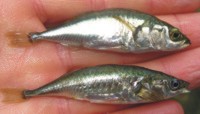
Barrett, R. D. H. and D. Schluter. 2008. Adaptation from standing
genetic variation. Trends in Ecology and Evolution 23: 38–44.
Reprint
Albert, A. Y. K., S. Sawaya, T. H. Vines, A. K. Knecht, C. T. Miller, B.
R. Summers, S. Balabhadra, D. M. Kingsley, and D. Schluter. 2008. The
genetics of adaptive shape shift in stickleback: pleiotropy and effect
size. Evolution 62: 76–85.
Reprint|
Supplement
Gow, J. L., S. M. Rogers, M. Jackson, and D. Schluter. 2008. Ecological
predictions lead
to the discovery of a benthic-limnetic sympatric
species pair of threespine stickleback in Little Quarry Lake, British
Columbia. Canadian Journal of Zoology 86: 564–571.
Reprint
Weir, J. T. and D. Schluter. 2008. Calibrating the avian molecular
clock. Molecular Ecology 17: 2321–2328.
Reprint
Weir, J. T., E. Bermingham, M. J. Miller, J. Klicka and M. A. González. 2008. Phylogeography of a morphologically diverse Neotropical montane species, the Common Bush-Tanager (Chlorospingus ophthalmicus). Molecular Phylogenetics and Evolution 47: 650–664.
Nosil, P. 2008. Speciation with gene flow could be common. Molecular Ecology 17: 2103-2106.
Nosil, P. 2008. Ernst Mayr and the integration of geographic and ecological factors in speciation. Biological Journal of the Linnean Society 95: 26-46.
Nosil, P., S. P. Egan and D. J. Funk. 2008. Heterogeneous genomic
differentiation between walking-stick ecotypes: ‘isolation by
adaptation’ and multiple roles for divergent selection. Evolution 62:
316–336.
Reprint
|
Supplement

Egan, S. P., P Nosil, and D. J. Funk. 2008. Selection and genomic differentiation during ecological speciation: isolating the contributions of host association via a comparative genome scan of Neochlamisus bebbianae leaf beetles. Evolution 62: 1162–1181.
Nosil P. and C. P. Sandoval. 2008. Ecological niche dimensionality and
the evolutionary diversification of stick insects. PLoS ONE 3:
e1907.
Reprint
Nosil P., L. J. Harmon and O. Seehausen. 2008. Ecological explanations
for (incomplete) speciation. Trends in Ecology and Evolution 24:
145–156.
Reprint
Nosil, P. and L. J. Harmon. 2008. Niche dimensionality and ecological speciation. In: R. Butlin, J. Bridle, and D. Schluter, editors. Ecology and Speciation. Cambridge University Press
Harmon, L. J., J. T. Weir, C. D. Brock, R. E. Glor and W. Challenger.
2008. GEIGER: investigating evolutionary radiations. Bioinformatics 24:
129–131.
Reprint
Revell, L. J., L. J. Harmon, and D. C. Collar. 2008. Phylogenetic signal, evolutionary process, and rate. Systematic Biology. 57: 591-601.
Revell, L. J. and L. J. Harmon. 2008. Testing quantitative genetic hypotheses about the evolutionary rate matrix for continuous characters. Evolutionary Ecology Research 10: 311-321.
Lavoué, S., M. E. Arnegard, J. P. Sullivan and C. D. Hopkins. 2008.
Petrocephalus of Odzala offer
insights into evolutionary patterns of signal diversification in the
Mormyridae, a family of weakly electrogenic fishes from Africa. Journal
of Physiology 102: 322–339.
Reprint
2007
Weir, J. T. and D. Schluter. 2007. The latitudinal gradient in recent
speciation and extinction rates of birds and mammals. Science 315:
1574–1576.
Reprint
|
ScienceNOW
|
Nature
News |
Why
Files |
New
Scientist |
Supplement
|
Comment
and response |
More
comment and response |
F1000
Marchinko, K. B. and D. Schluter. 2007. Parallel evolution by correlated
response: lateral plate reduction in threespine stickleback. Evolution
61: 1084–1090.
Reprint
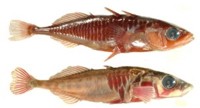
Albert, A. Y. K., N. P. Millar, and D. Schluter. 2007. Character
displacement of male nuptial colour in threespine sticklebacks
(Gasterosteus aculeatus). Biological Journal of the Linnean
Society 91: 37–48.
Reprint
Miller, C. T., S. Beleza, A. A. Pollen, D. Schluter, R. A. Kittles, M.
D. Shriver, and D. M. Kingsley. 2007. cis-Regulatory changes in
Kit ligand expression and parallel evolution of pigmentation
changes in sticklebacks and humans. Cell 131: 1179–1189.
Reprint
|
Cover
|
Supplement
|
News
| F1000
Svanbäck, R. and D. I. Bolnick. 2007. Intraspecific competition drives
increased resource use diversity within a natural population.
Proceedings of the Royal Society of London Series B, Biological Sciences
274: 839–844.
Reprint
Waldron, A. 2007. Null models of geographic range size evolution
reaffirm its heritability. American Naturalist 170: 221–231.
Reprint
Mittelbach, G. G., D. W. Schemske, H. V. Cornell, et al.. 2007.
Evolution and the latitudinal diversity gradient: speciation,
extinction, and biogeography. Ecology Letters 10: 315–331.
Reprint
2006
Vines, T. H. and D. Schluter. 2006. Strong assortative mating between
allopatric sticklebacks as a by-product of adaptation to different
environments. Proceedings of the Royal Society of London Series B,
Biological Sciences 273: 911–916.
Reprint
Bridle, J. R and T. H. Vines 2006. Limits to evolution at range
margins:when and why does adaptation fail? Trends in Ecology &
Evolution 22: 140–147.
Reprint
Weir, J. T. 2006. Divergent timing and patterns of species accumulation
in lowland and highland neotropical birds. Evolution 60: 842–855.
Reprint
Taylor, E. B., J. W. Boughman, M. Groenenboom, M. Sniatynski, D.
Schluter, and J. L. Gow. 2006. Speciation in reverse: morphological and
genetic evidence of the collapse of a threespine stickleback
(Gasterosteus aculeatus) species pair. Molecular Ecology 15:
343–355.
Reprint
|
Curr
Biol Dispatch |
NY
Times (Zimmer)
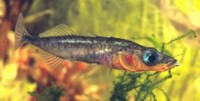
2005
Colosimo, P. F., K. E. Hosemann, S. Balabhadra, G. Villarrea, Jr., M.
Dickson, J. Grimwood, J. Schmutz, R. M. Myers, D. Schluter, and D. M.
Kingsley. 2005. Widespread parallel evolution in sticklebacks by
repeated fixation of ectodysplasin alleles. Science 5717:
1928–1933.
Reprint
|
Supplement
|
Science
Perspective |
Science Breakthrough of the Year: Cover |
Essay
|
Editorial
| F1000
Albert, A. Y. K. and S. P. Otto. 2005. Sexual selection can resolve
sex-linked sexual antagonism. Science 310: 119–121.
Reprint
Albert, A. Y. K. 2005. Mate choice, sexual imprinting, and speciation: a
test of a one-allele isolating mechanism in sympatric sticklebacks.
Evolution 59: 927–931.
Reprint
Albert, A. Y. K. and D. Schluter. 2005. Primer: Selection and the origin
of species. Current Biology 15: 283–288.
Reprint
Boughman, J. W., H. D. Rundle and D. Schluter. 2005. Parallel evolution
of sexual isolation in sticklebacks. Evolution 59: 361–373.
Reprint
| F1000
Nosil, P., T. H. Vines, and D. J. Funk. 2005. Perspective: reproductive
isolation caused by natural selection against immigrants from divergent
habitats. Evolution 59: 705–719.
Reprint
2004
Schluter, D., E. A. Clifford, M. Nemethy, and J. S. McKinnon. 2004.
Parallel evolution and inheritance of quantitative traits. American
Naturalist 163: 809–822.
Reprint
|
Online
Appendix |
TREE
Update
McKinnon, J. S., S. Mori, B. Blackman, L. David, D. Kingsley, L.
Jamieson, J. Chou, and D. Schluter. 2004. Evidence for ecology’s role in
speciation. Nature 429: 294–298.
Reprint
|
Supplement
|
Science
essay on ecology and speciation |
Evolution
gems 2009
Weir, J. T. and D. Schluter. 2004. Ice sheets promote speciation in
boreal birds. Proceedings of the Royal Society of London Series B,
Biological Sciences 271: 1881–1887.
Reprint
|
Natural
History Samplings |
Tree
Update
Vamosi, S. M. and D. Schluter. 2004. Character shifts in defensive armor
of sympatric sticklebacks. Evolution 58: 376–385.
Reprint
Albert, A. and D. Schluter. 2004. Reproductive character displacement of
male stickleback mate preference: reinforcement or direct selection?.
Evolution 58: 1099–1107.
Reprint
Shapiro, M. D., M. E. Marks, C. L. Peichel, B. K. Blackman, K. S.
Nereng, B. Jónsson, D. Schluter, and D. M. Kingsley. 2004. Genetic and
developmental basis of evolutionary pelvic reduction in threespine
sticklebacks. Nature 428: 717–723.
Reprint
|
Supplement
|
Corrigendum
|
News
& Views |
Devel
Cell Commentary |
Curr
Biol Dispatch |
Science
News Focus |
Heredity
Commentary |
TREE
Update |
F1000
Colosimo, P. F., C. L. Peichel, K. Nereng, B. K. Blackman, M. D.
Shapiro, D. Schluter, and D. M. Kingsley. 2004. The genetic architecture
of parallel armor plate reduction in threespine sticklebacks. PLOS
Biology 2: 635–641.
Reprint
|
PLoS
News |
TREE
Update |
F1000
Peichel, C. L., Ross, J. A., Matson, C. K., Dickson, M., Grimwood, J.,
Schmutz, J., Myers, R. M., Mori, S., Schluter, D., and Kingsley, D. M.
2004. The master sex-determination locus in threespine sticklebacks is
on a nascent Y chromosome. Current Biology 14: 1416–1424.
Reprint
|
Dispatch
|
News
Seehausen, O. and D. Schluter. 2004. Male-male competition and nuptial
colour displacement as a diversifying force in Lake Victoria cichlid
fish. Proceedings of the Royal Society of London Series B, Biological
Sciences 271: 1345–1353.
Reprint
Rundle, H. D. and D. Schluter. 2004. Natural selection and ecological
speciation in sticklebacks. Pages 192–209 in U. Dieckmann, M. Doebeli,
J. A. J. Metz, and D. Tautz (eds.) Adaptive speciation. Cambridge
University Press.
Reprint
2003
Rundle, H. D., S. M. Vamosi, and D. Schluter. 2003. Experimental test of
predation’s effect on divergent selection during character displacement
in sticklebacks. Proceedings of the National Academy of Sciences (USA)
100: 14943–14948.
Reprint
|
Supplement
Schluter, D. 2003. Frequency dependent natural selection during
character displacement in sticklebacks. Evolution 57: 1142–1150.
Reprint
Caley, M. J. and D. Schluter. 2003. Predators favour mimicry in a
tropical reef fish. Proceedings of the Royal Society of London Series B,
Biological Sciences 270: 667–672.
Reprint
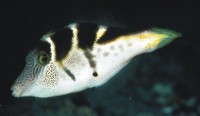
Vamosi, S. M. 2003. The presence of other fish species affects
speciation in threespine sticklebacks. Evolutionary Ecology Research 5:
717–730.
Reprint
Bell, T., W. E. Neill and D. Schluter. 2003. The effect of temporal
scale on the outcome of trophic cascade experiments. Oecologia 134:
578–586.
Reprint
2002
Rundle, H. D. 2002. A test of ecologically dependent postmating
isolation between sympatric sticklebacks. Evolution 56: 322–329.
Reprint
Vamosi, S. M. and D. Schluter. 2002. Impacts of trout predation on
fitness of sympatric sticklebacks and their hybrids. Proceedings of the
Royal Society of London Series B, Biological Sciences 269:
923–930.
Reprint
Vamosi S. M. 2002. Predation sharpens the adaptive peaks: survival
trade-offs in sympatric sticklebacks. Annales Zoologici Fennici 39:
237–248.
Reprint
Boughman, J. W. 2002. How sensory drive can promote speciation. Trends
in Ecology and Evolution 17: 571–577.
Reprint
Bell, T. 2002. The ecological consequences of unpalatable prey:
phytoplankton response to nutrient and predator additions. Oikos 99:
59–68.
Reprint
2001
Schluter, D. 2001. Ecology and the origin of species. Trends in Ecology
and Evolution 16: 372–380.
Reprint
Boughman, J. W. 2001. Divergent sexual selection enhances reproductive
isolation in sticklebacks. Nature 411: 944–947.
Reprint
Kapan, D. 2001. Three-butterfly system provides a field test of
Müllerian mimicry. Nature 409: 338–400.
Reprint
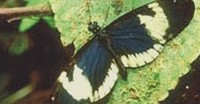
Peichel, C. L., K. S. Nereng, K. A. Ohgi, B. L. E. Cole, P. F. Colosimo,
C. A. Buerkle, D. Schluter and D. M. Kingsley. 2001. The genetic
architecture of rapid morphological divergence between threespine
stickleback species. Nature 414: 901–905.
Reprint
|
Supplement
|
news
& views |
Bioessay
| F1000
Pritchard, J. and D. Schluter. 2001. Declining competition during
character displacement: summoning the ghost of competition past.
Evolutionary Ecology Research 3: 209–220.
Reprint
Rundle, H.D. and M. C. Whitlock. 2001. A genetic interpretation of
ecologically-dependent isolation. Evolution 55: 198–201.
Reprint
2000
Losos, J. and D. Schluter. 2000. Analysis of an evolutionary
species-area relationship. Nature 408: 847–850.
Reprint
|
TREE
news & comment
Rundle, H. D., L. Nagel, J. W. Boughman, and D. Schluter. 2000. Natural
selection and parallel speciation in sympatric sticklebacks. Science
287: 306–308.
Reprint
|
Curr Biol Dispatch |
Science
essay on the species problem
Schluter, D. 2000. Ecological character displacement in adaptive
radiation. American Naturalist 156 (Supplement): S4–S16.
Reprint
1995–1999
Hatfield, T. and D. Schluter. 1999. Ecological speciation in
sticklebacks: environment-dependent hybrid fitness. Evolution 53:
866–873.
Reprint
|
TREE
news & comment
Vamosi, S. M. and D. Schluter. 1999. Sexual selection against hybrids
between sympatric stickleback species: evidence from a field experiment.
Evolution 53: 874–879.
Reprint
|
TREE
news & comment
Mooers, A. Ø. and D. Schluter. 1999. Reconstructing ancestor states with
maximum likelihood: support for one- and two-rate models. Systematic
Biology 48: 623–633.
Reprint
Mooers, A. Ø, S. M. Vamosi and D. Schluter. 1999. Using phylogenies to
test macroevolutionary hypotheses of trait evolution in cranes
(Gruinae). American Naturalist 154: 249–259.
Reprint
Nagel, L. and D. Schluter. 1998. Body size, natural selection, and
speciation in sticklebacks. Evolution 52: 209–218.
Reprint
Rundle, H. D. and D. Schluter. 1998. Reinforcement of stickleback mate
preferences: sympatry breeds contempt. Evolution 52: 200–208.
Reprint
Schluter, D. 1998. Ecological causes of speciation. Pp. 114–129 in D.
J. Howard and S. H. Berlocher (eds.). Endless forms: species and
speciation. Oxford University Press, Oxford.
Online
Caley, M. J. and D. Schluter. 1997. The relationship between local and
regional diversity. Ecology 78: 70–80.
Reprint
Hatfield, T. 1997. Genetic divergence in adaptive characters between
sympatric species of stickleback. American Naturalist 149:
1009–1029.
Reprint
Schluter, D, T. D. Price, A. Ø. Mooers, and D. Ludwig. 1997. Likelihood
of ancestor states in adaptive radiation. Evolution 51: 1699–1711.
Reprint
Hatfield, T. and D. Schluter. 1996. A test for sexual selection on
hybrids of two sympatric sticklebacks. Evolution 50: 2429–2434.
Reprint
Schluter, D. 1996. Adaptive radiation along genetic lines of least
resistance. Evolution 50: 1766–1774.
Reprint
|
Discover
Magazine
Schluter, D. 1996. Ecological speciation in postglacial fishes.
Philosophical Transactions of the Royal Society of London, Series B 351:
807–814.
Reprint
Schluter, D. 1996. Ecological causes of adaptive radiation. American
Naturalist 148 (Supplement): S40–S64.
Reprint
Day, T., and J. D. McPhail. 1996. The effect of behavioural and
morphological plasticity on foraging efficiency in the threespine
stickleback (Gasterosteus sp.). Oecologia 108: 380–388.
Reprint
Schluter, D. 1995. Adaptive radiation in sticklebacks: trade-offs in
feeding performance and growth. Ecology 76: 82–90.
Reprint
Schluter, D. and L. Nagel. 1995. Parallel speciation by natural
selection. American Naturalist 146: 292–301.
Reprint
Kassen, R., D. Schluter and J. D. McPhail. 1995. Evolutionary history of
threespine sticklebacks (Gasterosteus spp): insights from a
physiological clock. Canadian Journal of Zoology 73: 2154–2158.
Reprint
1990–1994
Schluter, D. 1994. Experimental evidence that competition promotes
divergence in adaptive radiation. Science 266: 798–801.
Reprint
|
Science
Perspective |
Weiner
essay in Science |
Critiques
and response
Schluter, D. and D. Nychka. 1994. Exploring fitness surfaces. American
Naturalist 143: 597–616r
Reprint
Day, T., J. Pritchard, and D. Schluter. 1994. Ecology and genetics of
phenotypic plasticity: a comparison of two sticklebacks. Evolution 48:
1723–1734.
Reprint
Schluter, D. 1993. Adaptive radiation in sticklebacks: size, shape, and
habitat use efficiency. Ecology 74: 699–709.
Reprint
Schluter, D. and T. Price. 1993. Honesty, perception and population
divergence in sexually selected traits. Proceedings of the Royal Society
of London, Series B 253: 117–122.
Reprint
Schluter, D. and L. Gustafsson. 1993. Maternal inheritance of condition
and clutch size in the collared flycatcher. Evolution 47: 658–667.
Reprint
Schluter, D. and J. D. McPhail. 1993. Character displacement and
replicate adaptive radiation. Trends in Ecology & Evolution 8:
197–200.
Reprint
Schluter, D. and J. D. McPhail. 1992. Ecological character displacement
and speciation in sticklebacks. American Naturalist 140: 85–108.
Reprint
| #67 on Courchamp & Bradshaw’s (2017)
100 articles
every ecologist should read |
Sridhar
interview: Revisiting Schluter & McPhail 1992
Schluter, D. 1992. Brain size differences. Nature 359: 181.
Reprint
Price, T. and D. Schluter. 1991. On the low heritability of life-history
traits. Evolution 45: 853–861.
Reprint
Schluter, D., Price, T. D. and L. Rowe. 1991. Conflicting selection
pressures and life history trade-offs. Proceedings of the Royal Society
of London B 246: 11–17.
Reprint
Schluter, D. 1990. Species-for-species matching. American Naturalist
136: 560–568.
Reprint
1980’s
Schluter, D. 1988. Estimating the form of natural selection on a
quantitative trait. Evolution 42: 849–861.
Reprint
Schluter, D. 1988. Character displacement and the adaptive divergence of
finches on islands and continents. American Naturalist 131:
799–824.
Reprint
Schluter, D. 1988. The evolution of finch communities on islands and
continents: Kenya vs Galápagos. Ecological Monographs 58: 229–249.
Reprint
Schluter, D. 1986. Tests for similarity and convergence of finch
communities. Ecology 67: 1073–1085.
Reprint
Schluter, D., and J. Smith. 1986. Natural selection on beak and body
size in the song sparrow. Evolution. 221–231.
Reprint
Schluter, D., T. D. Price, and P. R. Grant. 1985. Ecological character
displacement in Darwin’s finches. Science 227: 1056–1059.
Reprint
Schluter, D. 1985. Character displacement between distantly-related
taxa? Finches and bees in the Galápagos. American Naturalist 127:
95–102.
Reprint
Grant, P. R., I. Abbott, D. Schluter, R. L. Curry, and L. K. Abbott.
1985. Variation in the size and shape of Darwin’s finches. Biological
Journal of the Linnean Society 25: 1–39.
Reprint
Schluter, D. 1984. A variance test for detecting species associations,
with some example applications. Ecology 65: 998–1005.
Reprint
Schluter, D. 1984. Morphological and phylogenetic relations among the
Darwin’s finches. Evolution 38: 921–930.
Reprint
Schluter, D. 1984. Body size, prey size, and herbivory in the Galápagos
lava lizard, Tropidurus. Oikos
43: 291–300.
Reprint
Schluter, D. and P. R. Grant. 1984. Determinants of morphological
patterns in communities of Darwin’s finches. American Naturalist 123:
175–196.
Reprint
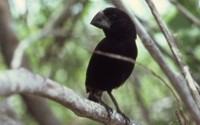
Schluter, D. and P. R. Grant. 1984. Ecological correlates of
morphological evolution in a Darwin’s Finch, Geospiza
difficilis. Evolution 38: 856–869.
Reprint
Schluter, D. 1982. Distributions of Galápagos ground finches along an
altitudinal gradient: the importance of food supply. Ecology 63:
1504–1517.
Reprint
Schluter, D. 1982. Seed and patch selection by Galápagos ground finches:
relation to foraging efficiency and food supply. Ecology 63:
1106–1120.
Reprint
Schluter, D. and P. R. Grant. 1982. The distribution of Geospiza
difficilis in relation to G. fuliginosa in the Galapagos
Islands: tests of three typotheses. Evolution 36:
1213–1226.
Reprint
© 2009-2026 Dolph Schluter
